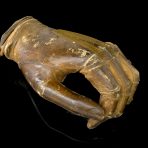Disability Futurity Seminar: ‘Wholeness’, ‘Incompleteness’, and Disabled Futurity in Victorian Prosthesis Narratives
Disability Futurity Seminar: ‘Wholeness’, ‘Incompleteness’, and Disabled Futurity in Victorian Prosthesis Narratives
Categories: Lectures and Seminars | Intended for Anyone

Location Details
The online lecture and seminar will be hosted through live videoconference.
Please register below to receive a Zoom Meeting link to the event.
Only a name and email are required. Please feel free to write "N/A" in all other registration fields.
Contact Information
Ryan Patterson, ,, Ryan.Patterson@carleton.ca
Registration
Cost
Free
About this Event
Host Organization: Carleton University Disability Research Group
This talk will investigate how and why physical ‘wholeness’ became culturally dominant in the nineteenth century, and how literary representations of prosthetics engaged with this hegemony. The first part will parse the historical factors underpinning the rise of physical ‘normalcy’, including coalescing theories that drew together mind and body, the rise of bodily statistics, lingering fears of contagion, changes to the Poor Laws, unshifting gendered social demands, and the marketing efforts of emerging prosthetists. The second part will then turn to transgressive literary imaginaries of prostheses. Using two fictional case studies that represent artificial-hand users, English poet, novelist, and playwright Robert Williams Buchanan’s ‘Lady Letitia’s Lilliput Hand’ (1862) and the lesser-known short-story writer T. Lockhart’s ‘Prince Rupert’s Emerald Ring’ (1895), I will argue that literary representations of prostheses often simultaneously reinforced and complicated the hegemony of physical ‘completeness’.(1) As I will suggest, such stories perpetuated fears of physical disaggregation while also bringing into question the efficacy of prostheticising. Towards the end of the talk I will read Buchanan’s short story through the lens of Alison Kafer’s concept of ‘crip time’, highlighting how disabled futurity was not always imagined in negative ways in the nineteenth century.(2)
1) Robert Williams Buchanan, ‘Lady Letitia’s Lilliput Hand’, Temple Bar, 4, 5 (1862), 551–69, 114–31; T. Lockhart, ‘Prince Rupert’s Emerald Ring’, Chambers’s Journal of Popular Literature, Science and Arts, 12 (1895), 300–304.
2) Alison Kafer, Feminist, Queer, Crip (Bloomington, IN: Indiana University Press, 2013).
This seminar is part of the Disability Futurity series organised by the Carleton University Disability Research Group in collaboration with the Liverpool Hope University Centre for Culture & Disability Studies.